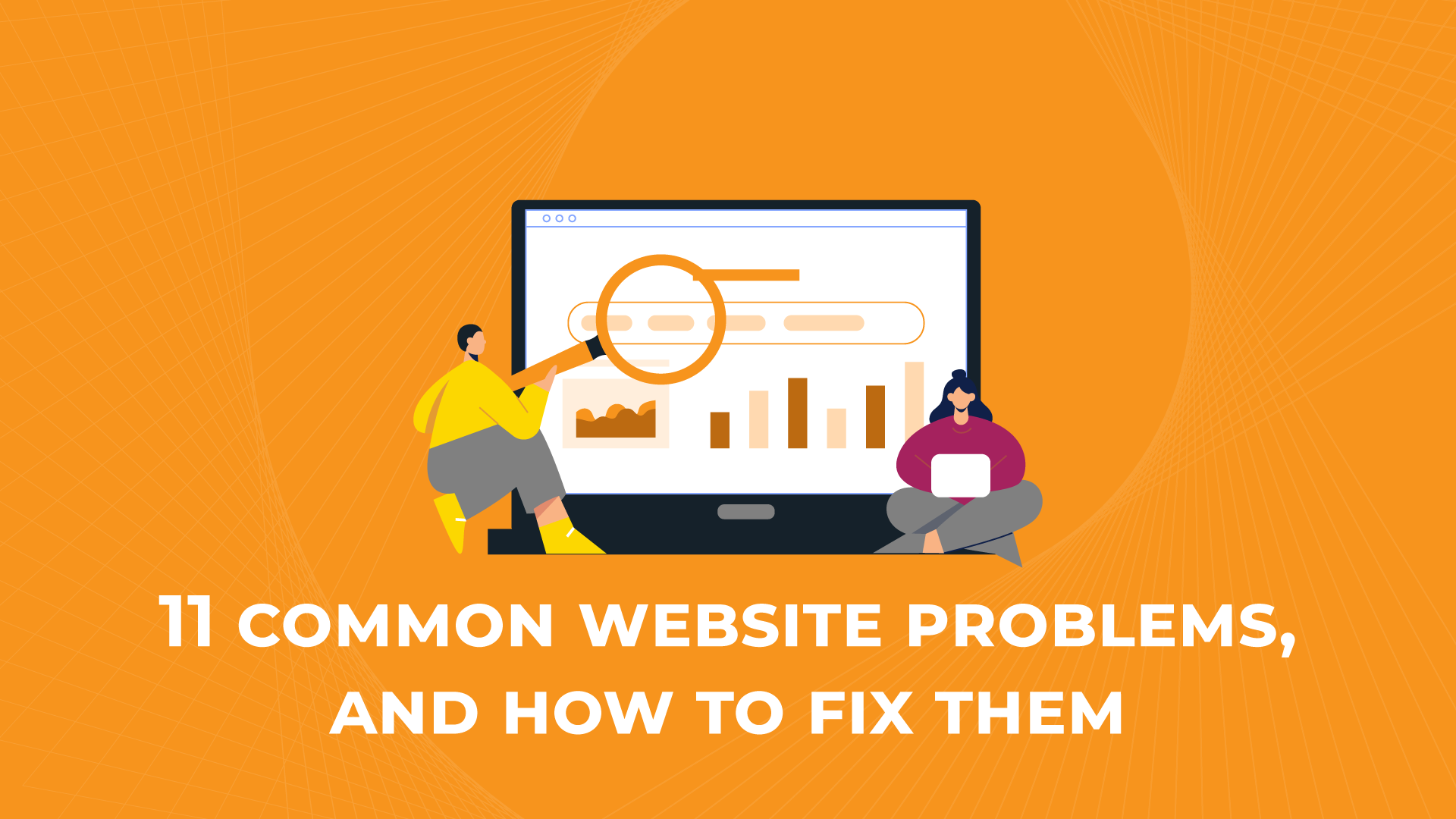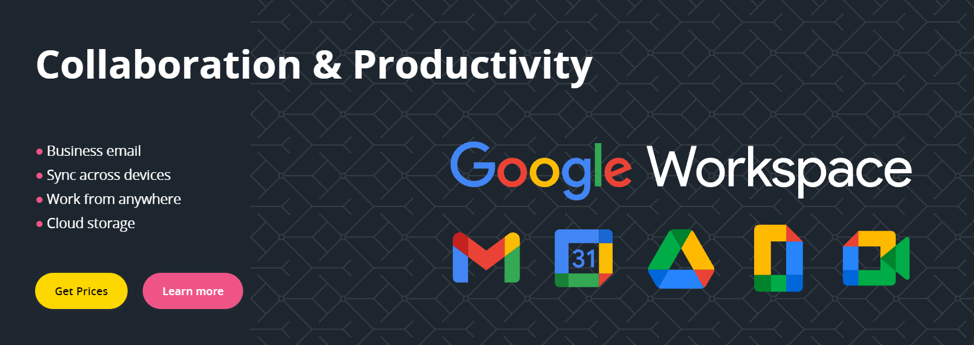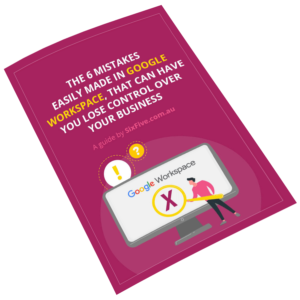
Is your website an asset or a liability to your business? In other words: does it add value to your business, or does it create even more expenses?
If you’re unsure of whether your website is an asset or a liability, ask yourself:
- Is my site helping me sell whatever I’m selling?
- Am I receiving a lot of traffic?
- Most importantly, is that traffic being converted into leads/paying customers?
If the answers are “no”, there may be multiple problems making your website a liability to your business. That means you’re essentially wasting your money on what was supposed to be one of your biggest sources of leads and income generation.
It’s about time you checked for the following potential 11 problems on your website. Here they are, and here’s how to fix them.
Your contact form doesn’t work
When people are primed to request a demo, ask a product-related question, or contact you for whatever reason, your contact form must be working. Nothing hurts lead generation more than blocking eager visitors on their path towards a purchase.
Your contact form should effortlessly bridge your interactions with your customers. If it’s not doing that, it shouldn’t even be there.
A common contact form malfunction includes emails that were sent, but not received. If you’re using the Contact Form 7 WordPress plugin, installing an SMTP plugin to authenticate your emails (by not filtering them as spam) should solve this common problem.
You either have no CTAs, or yours are horrible
Yes, bad calls-to-action are a thing. Marketers will often rush through the writing of CTAs because they’re just small buttons. No one will pay close attention to them, right?
As it turns out, these seemingly small buttons are crucial for conversions. Your CTA text, placement, and even colour can increase or decrease your conversion rates.
Where should you place important CTAs across your website? What colours should you make them? What shouldn’t you write? We’ll answer all of these questions.
The primary places you should focus on are:
- The header (above-the-fold). Below is an example from our website. Notice how the colours contrast with the background, while still being faithful to our brand’s colours (purple and yellow). There are two CTAs: one for those who are ready to see pricing, and a second one for those who still need more nurturing.

- In the middle of the page. If you have blog post sections and product/service pages, you should encourage people to click through other pages. We do this by describing the additional services we offer and adding a CTA at the end for those interested in learning more.

- At the bottom of the page. Of course, you shouldn’t miss the opportunity of encouraging visitors to become leads. Be sure to include a lead magnet at the end of the homepage.

Friendly advice: steer clear from CTAs like “sign up” and “buy now”. Unless a visitor is ready to make a conversion (as in typing in their credit card number), this kind of CTA implies work. People don’t enjoy being hit with a “buy now” button when they’ve just arrived at your site. This is the equivalent of a nagging salesman begging you to buy their product when you’ve just met them.
The less people feel like they have to do things, the better. Instead of “sign up” which implies work, “join now” is a much better option. Joining sounds a lot easier than signing up.
Keep in mind that, as with everything on your site, your CTAs require A/B testing. Testing is the only way to know whether your site could be performing better than it currently is.
Your navigation is hidden from proper view
A rule of thumb for any website: visitors should arrive and know exactly where to go from there. Staying on a web page is hard enough as it is — you shouldn’t make it harder by making them fish for information.
Hamburger menus do the opposite of that. According to UX Design, hamburger menus cut discoverability in half because the navigation bar becomes hidden. Avoid hamburger menus at all costs, especially on desktop websites, and consider other options if possible.
The more time visitors spend trying to figure out what to do, the less likely they are to stick around.
Your site has no contact information available
Imagine entering a website without contact info. No contact page with a contact form, no email to reach out to, no business phone number insight, nothing. You’re basically incommunicado.
Think about it: you could’ve converted several visitors into leads by answering simple questions. Trouble is, they couldn’t reach you.
On the SixFive website, we keep our contact page and phone number right on the top right. It might not be the first thing visitors look at, but it’s readily available if they need it.

Make your contact information easy to find. People will be looking for it.
You use generic stock images
Don’t even get us started on stock images. They pass off an amateurish vibe you don’t want on your website.
While it’s true that some businesses don’t have the budget to have some professional snapshots taken, that shouldn’t be an excuse to use the most generic pictures you can find online.
If you need to use Creative Commons images, websites like Unsplash and Pixabay offer professional free images that actually look good. Give them a try.
You don’t answer your visitors’ questions
If you go to any company’s comment section on Google, the most common complaints you’ll find are related to direct messages going unanswered. As you know, no one likes to be left hanging with no response.
Plus, as we’ve mentioned, answering your visitor’s questions is key to removing their objections regarding your product.
On a website, you’re more likely to interact with your visitors through pop-up chats, like the ones powered by Intercom. (Ours is powered by tawk.to, and we love it!)
Even though your live chat isn’t available 24/7, make sure to notify visitors at which time questions are normally answered. This way, they won’t feel like you’ve ignored their message.
The same thing goes for email. Be sure not only to have all emails answered, but let people know when you’ll get back to them. And do get back to them.
You’re missing out on routine maintenance and updates
There’s no point in paying thousands of dollars for website design, domain, and hosting if you’re not making sure it’s always in top condition.
We like to compare a functioning website to a car. Unless you change your car oil regularly, it will stall and malfunction. Same thing on a website: if it’s not properly updated and maintained, it won’t be fulfilling its role as an asset.
If your website isn’t drawing in as much high-quality traffic as possible, you’re pouring money down the drain.
You can read more about the 10 essential tasks to complete on your website every month.
Your website is slow to load
You might’ve read that 53% of mobile website visitors will leave a page if it doesn’t load in three seconds. Not to mention, page speed is also a direct Google ranking factor.
With that in mind, your website should be performing well and fast at all times, on all devices. How can you optimise your website’s speed?
When it comes to speed, website hosting is important — but so is the way your theme is built and how many plugins you have. Using too many plugins can lead to everything from a slow loading speed to more frequent site crashes. If you can, make sure to keep your installed plugins down to 20 or less.
The WordPress theme you’ve chosen can also be the culprit behind a slow website. Be sure to select lighter themes that are responsive and, if possible, SEO-friendly.
Using loads of fonts and colours
Never select fonts and colours randomly. Your website design (which includes the fonts and colours you use) must reflect your company’s branding.
In most well-designed websites, you’ll often see two colours stand out. Ours are purple and yellow — purple being the colour of our navigation bar and our logo, and yellow being the colour of most CTAs and a few backgrounds.
We also use white and black for background variations. Yet, we never go past these four colours as they reflect SixFive’s branding. Ideally, your website would include up to four colours.
Besides, you should stick to no more than three fonts across your whole website. More than that could litter the page and confuse your reader.
Not using responsive templates
Responsive templates work well and look good on every device, whether that’s a desktop, an iPad, or a smartphone. They became one of Google’s ranking factors in 2015, along with mobile-friendly websites.
If most of your traffic comes from mobile — which makes sense, seeing that mobile welcomes half of the global web traffic — a responsive design is a must. Apart from adjusting to any screen size, responsive templates provide faster-loading themes, as well as lower bounce rates. And the lower the bounce rates, the more your conversion chances increase.
Lack of time to do anything about it
Some websites just sit there, eating up time and money.
Sadly, this is a reality for hard-pressed business owners who can’t manage a whole site by themselves. It’s what turns their website into a liability, one that offsets their hard work and wastes a chunk of their budget.
If you’re one of those business owners, know that your website won’t be a sales magnet unless you make it one. People won’t just magically find it on Google — you have to work for the positions.
How about you stop leaving money on the table and start seeing real results, without doing the busy work?
Take a breather. If you’re trying to turn your website into an asset without burning yourself out, check out our care plans and ask us about our content generation and automation packages.

